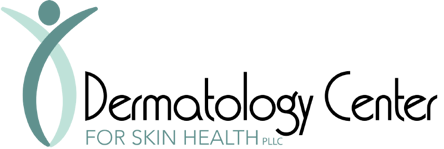The skin is made up of three layers: the epidermis (outer layer), dermis (middle layer) and the subcutis (basement layer). The middle layer contains collagen, elastic, blood capillaries, nerve endings and other fibers that give your skin the structure it needs to hold up. These structures are what give your skin a youthful appearance; however, these structures are also what can be damaged by UV radiation. When these structures are damaged, your skin can lose its youthful appearance and cause you to prematurely age, also known as photoaging.
Learn more about photoaging, including signs of photoaging, where it can appear, as well as how to prevent it.
WHAT IS PHOTOAGING
Photoaging is the premature aging of the skin due to prolonged exposure to UVA radiation, as well as artificial UV sources like tanning.
Individuals who are most affected by the sun, resulting in photoaging, includes:
- Fair-skinned people with blond or red hair
- Individuals who work outside or who spend prolonged periods outside due to recreational activities
- Individuals with skin types I, II, and III
Skin Types
The Fitzpatrick skin type system was developed in 1975 to classify skin types related to the pigment of the skin and the skin’s reaction to the sun. This information can help your dermatologist predict your risk to skin cancer or damage. This system classifies six different skin types:
- Skin type one has ivory colored skin, lighter colored eyes (light blue, light green, light gray), light-colored hair and skin that freckles, burns and peels in the sun.
- Skin type two has fair or pale skin, lighter colored eyes (blue, green, gray), blonde hair and has skin that freckles, burns and peels often in the sun.
- Skin type three has a golden skin tone, hazel or light brown eyes, dark blonde/light brown hair color and skin that freckles, burns and peels occasionally in the sun.
- Skin type four has olive colored skin, dark eye colors, brown hair and skin that doesn’t freckle and rarely burns in the sun.
- Skin type five has a darker skin tone, dark color eyes, dark hair and rarely freckle or burns in the sun.
- Skin type six has dark brown skin, dark eye color, dark hair color and never freckles or burns in the sun.
While you may not fit “all” of the identifiers in the classification, if you fit some identifiers of skin type one, two or three, you may be at risk for photoaging.
SIGNS OF PHOTOAGING
Photoaging can occur anywhere on the body that is exposed frequently to the sun. Most commonly, photoaging appears on the face, neck and the backs of the hand and sometimes on the lips and chest.
Signs of photoaging include:
- Wrinkles
- Freckles, age or liver spots, uneven skin tones
- Spider veins on the affected area
- Red, scaly spots that could be an actinic keratosis, which could be precancerous spots that require treatment
PREVENT PHOTOAGING
While aging is unavoidable, premature aging is preventable. Use these top tips to prevent premature aging:
- Wear sunscreen with SPF 30 or higher that works on UVA Rays. Look for the term “broad spectrum” as well as physical blockers like zinc or titanium.
- Seek shade, especially when the sun’s intensity is highest between 10 AM and 4 PM.
- Wear protective clothing like a wide-brimmed hat and sunglasses. Look for clothing that is labeled ultraviolet protection factor (UPF).
- Watch for the UV index. The UV index forecasts the level of solar UV radiation.
- If you’re using cosmetics or lip balm, make sure you are using ones that contain SPF 30.
- Avoid tanning.

TREATMENT FOR PHOTOAGING
If you’re already affected by photoaging, some treatments can help reduce the appearance of this, including topical creams, skin care systems and cosmetic procedures:
Alpha-hydroxy Acids (AHAs): AHAs produce subtle improvements in the appearance of wrinkles, caused by photoaging, by exfoliating the top damaged layer on the skin while stimulating the growth of new, more radiant skin cells.
Antioxidants: Topical antioxidants can be effective in protecting against and reversing photo-damage to the skin. Antioxidants, protect skin against sunburn, suntan, and skin cancer and also reverse the mottled pigmentation and wrinkles of photoaging. Examples of topical antioxidants include vitamin C, resveratrol, vitamin E and green tea. Antioxidants found in creams that consist of vitamin A, C, E and beta-carotene. These vitamins improve the appearance of your skin and provide added sun damage protection.
Chemical Peels: Chemical peels are a skin-resurfacing procedure that removes the top layers on the skin. The regenerated skin is smoother and more youthful in appearance. Chemical peels work at varying depths (light, medium or deep) depending on the desired result. Each type of chemical peel uses a different chemical solution and produces different outcomes.
Laser Therapy: Laser therapy is a non-invasive therapy that can use light energy to repair premature aging effects like wrinkles and renew the skin. At the Dermatology Center for Skin Health, PLLC, we use the VBeam Perfecta. The VBeam © Perfecta is the gold standard pulse dye laser. A pulsed dye laser (PDL) such as the VBeam © delivers an intense light to the affected skin area to achieve clinical results. The targeted blood vessels or pigmented area absorbs the light, treating the condition.
Microdermabrasion: Microdermabrasion uses a variable-level vacuum system and an assortment of treatment tips. The microdermabrasion wand lifts the skin against the appropriate treatment tip, removing the topmost layer on the skin. This pain-free treatment exfoliates the topmost layer of skin to sweep away the appearance of skin imperfections, promote collagen, and improve radiance, tone and texture.
Microneedling: Automated micro-needling is an innovation in aesthetics for the treatment of the appearance of photoaging. At the Dermatology Center for Skin Health, PLLC, we use the FDA approved SkinPen®, which creates a fresher appearance and glow to the skin. This 15 to 30-minute procedure creates controlled micro-injuries to the skin to aid in the production of collagen and elastic. This skin’s repair process results in a thicker epidermis with a softer appearance of wrinkles. This procedure also allows the skin to absorb topical gels, creams and serums more effectively, enhancing deeper layers of the skin.
Photodynamic Light Therapy (PDT): PDT is a non-invasive therapy that uses multiple sessions of light treatments in conjunction with a photosensitizing agent. The photosensitizing agent is an inactive medication that only activates when exposed to UV radiation or sunlight. Then, the ALA (Levulan) is administered directly on the skin, and blue light is applied to activate the ALA. PDT is used to treat superficial precancerous lesions called actinic keratoses and certain other types of cancer cells can be eliminated this way in a physician’s office. PDT is also referred to as blue light therapy.
Retinoids: Retinol is a powerful antioxidant that fights free radicals and reduces the signs of aging. It’s a form of vitamin A-based medications that can reduce fine lines and wrinkles caused by sun damage. Retinoids increase the amount of collagen made and stimulate the production of new blood vessels, giving color to the skin.
Sunblocks: Utilizing sunblock daily can help protect against premature aging. When looking for sunblocks to use, look for ones that have an SPF of 30 or higher.
Dermatology Center for Skin Health, PLLC Skin Care Systems for PhotoAging:
Sensitive Skin System is comprised of four different skin treatments:
- Ultra Gentle Cleanser: This light foaming cleanser is soap-free, is ideal for all skin types and can be used in the morning and evening. It contains liposome encapsulated vitamins and has a light lavender scent.
- P3 Antioxidant Cream: Our Triple Antioxidant Cream combines the power of 90 percent green tea polyphenols, caffeine USP and resveratrol to give our patients unprecedented antioxidant protection. This product should be used in the morning.
- Physical Sunscreen: This elegant sunscreen provides superior broad spectrum SPF 50+ UVA & UVB protection. This should be used in the morning.
- Nourish and Repair Cream: This decadently rich, restorative night cream provides intense moisturization and age-defying benefits, nourishing dry skin back to optimum health. This should be used in the evening.

Sensitive Skin System
Anti-Photoaging System is comprised of five different skin treatments:
- Ultra Gentle Cleanser: This light foaming cleanser is soap-free, is ideal for all skin types and can be used in the morning and evening. It contains liposome encapsulated vitamins and has a light lavender scent.
- Brightening C Serum: This brightening and hydrating vitamin C serum delivers enhancing benefits to achieve improved skin texture and tone resulting in healthier looking skin. This should be used in the morning.
- Retinol Smoothing Serum: This refining retinol treatment is enhanced with a revolutionary, time-release delivery system along with the antioxidant benefits of 90 percent green tea polyphenols, caffeine USP to help prevent irritation while efficiently delivering results. This should be used in the evening.
- Glycolic Facial Cream: This hydrating cream uses the power of glycolic acid to smooth the skin. A rich pairing of ultra-pure crystalline glycolic acid and antioxidants. This should be used in the morning.
- Physical Sunscreen: This elegant sunscreen provides superior broad spectrum SPF 50+ UVA & UVB protection. This should be used in the morning.

Anti-Photoaging System
Anti-Photoaging & Brightening System is comprised of six different treatments:
- Ultra Gentle Cleanser: This light foaming cleanser is soap-free, is ideal for all skin types and can be used in the morning and evening. It contains liposome encapsulated vitamins and has a light lavender scent.
- Skin Tone Enhancement: This skin tone enhancement kit contains botanical skin brighteners including kojic acid, arbutin and bearberry in an alcohol and acetone-free base. This should be used in the morning and evening.
- Brightening C Serum: This brightening and hydrating vitamin C serum delivers enhancing benefits to achieve improved skin texture and tone resulting in healthier looking skin. This should be used in the morning.
- Retinol Smoothing Serum: This refining retinol treatment is enhanced with a revolutionary, time-release delivery system along with the antioxidant benefits of 90 percent green tea polyphenols, caffeine USP to help prevent irritation while efficiently delivering results. This should be used in the evening.
- Glycolic Facial Cream: This hydrating cream uses the power of glycolic acid to smooth the skin. A rich pairing of ultra-pure crystalline glycolic acid and antioxidants. This should be used in the morning.
- Physical Sunscreen: This elegant sunscreen provides superior broad spectrum SPF 50+ UVA & UVB protection. This should be used in the morning.

Anti-Photoaging & Brightening System
PREMATURE AGING | PHOTOAGING | MORGANTOWN, WEST VIRGINIA | HOW CAN WE HELP?
At the Dermatology Center for Skin Health, PLLC, it is our goal to promote healthy and positive skin care. If you are not showing signs of premature aging, and want to learn more about preventive care, download our Preventive Care Guidebook or schedule an appointment with our dermatologists to talk about your skin care:
If you are presenting signs of photoaging because of prolonged sun exposure, you may want to schedule an appointment with our dermatologists as some signs of premature aging like actinic keratosis can be precancerous.


